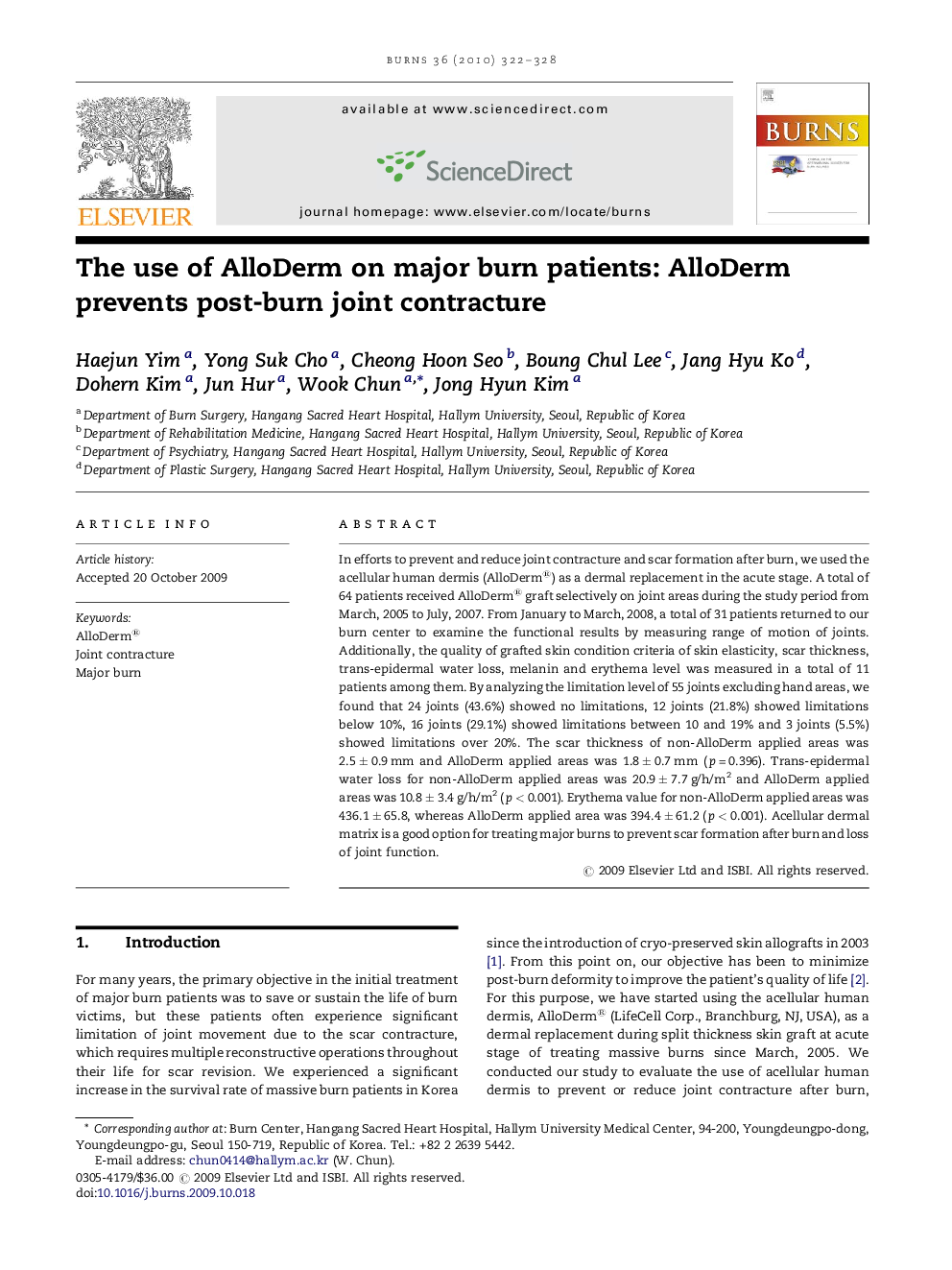| Article ID | Journal | Published Year | Pages | File Type |
|---|---|---|---|---|
| 3105815 | Burns | 2010 | 7 Pages |
In efforts to prevent and reduce joint contracture and scar formation after burn, we used the acellular human dermis (AlloDerm®) as a dermal replacement in the acute stage. A total of 64 patients received AlloDerm® graft selectively on joint areas during the study period from March, 2005 to July, 2007. From January to March, 2008, a total of 31 patients returned to our burn center to examine the functional results by measuring range of motion of joints. Additionally, the quality of grafted skin condition criteria of skin elasticity, scar thickness, trans-epidermal water loss, melanin and erythema level was measured in a total of 11 patients among them. By analyzing the limitation level of 55 joints excluding hand areas, we found that 24 joints (43.6%) showed no limitations, 12 joints (21.8%) showed limitations below 10%, 16 joints (29.1%) showed limitations between 10 and 19% and 3 joints (5.5%) showed limitations over 20%. The scar thickness of non-AlloDerm applied areas was 2.5 ± 0.9 mm and AlloDerm applied areas was 1.8 ± 0.7 mm (p = 0.396). Trans-epidermal water loss for non-AlloDerm applied areas was 20.9 ± 7.7 g/h/m2 and AlloDerm applied areas was 10.8 ± 3.4 g/h/m2 (p < 0.001). Erythema value for non-AlloDerm applied areas was 436.1 ± 65.8, whereas AlloDerm applied area was 394.4 ± 61.2 (p < 0.001). Acellular dermal matrix is a good option for treating major burns to prevent scar formation after burn and loss of joint function.
